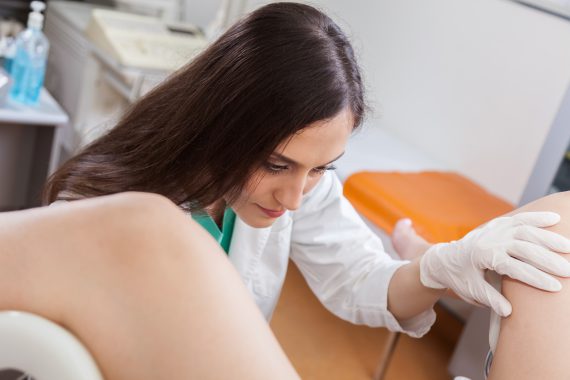GPs should refer a significantly larger number of women with heavy menstrual bleeding for testing, or carry out their hysteroscopy themselves, NICE has said.
The new NICE clinical guideline, published today, recommends that women should be offered outpatient hysteroscopy if they have symptoms or risk factors for gynaecological conditions such as submucosal fibroids, polyps or endometrial pathology, including persistent intermenstrual bleeding.
NICE estimates this will lead to 10,000 more women receiving the test, bringing the total to 15,000 in England each year.
Among suggestions for how to cope with the increased demand for investigations, NICE recommends that ‘GPs and nurses could be trained to perform hysteroscopy in primary care’.
It also says ‘specialists could offer more services in the community’, as, unlike ultrasound, hysteroscopy is not available through direct booking in primary care.
Currently around one in 20 women aged between 30 and 49 years, visits their GP for heavy periods and menstrual problems each year.
The guideline says GPs should ‘take into account the woman’s history and examination when deciding whether to offer hysteroscopy or ultrasound as the first-line investigation’.
Other new recommendations include simple treatments that GPs can provide, such as a hormonal contraceptive for women who have a low risk of underlying gynaecological problems.
Despite the expected increase in investigations, NICE reasoned that there will be ‘ongoing savings’ due to reductions in the number of unnecessary investigations and more women being offered effective treatment following accurate diagnosis.
NICE guidelines director Professor Mark Baker said: ‘Since we published our original guideline in 2007 there have been significant advances in diagnostic techniques, which have been reflected in the new guideline.
‘In many circumstances ultrasound has been replaced with hysteroscopy as a first-line investigative test as it provides a more accurate diagnosis.’
He said that the change ‘should help ensure women with underlying endometrial diseases or conditions are more effectively diagnosed and can therefore receive better treatment’.
‘Not only this but the cost of additional hysteroscopy will be offset by savings from fewer ultrasound investigations and fewer appointments following the diagnostic test,’ he added.
NICE said NHS organisations will need to take any additional costs and savings into account when considering changes.
Key points from the new guidance on heavy menstrual bleeding
1.3.1 Consider starting pharmacological treatment for HMB without investigating the cause if the woman’s history and/or examination suggests a low risk of fibroids, uterine cavity abnormality, histological abnormality or adenomyosis.
1.3.3 Take into account the woman’s history and examination when deciding whether to offer hysteroscopy or ultrasound as the first-line investigation.
1.3.4 Offer outpatient hysteroscopy to women with HMB if their history suggests submucosal fibroids, polyps or endometrial pathology because:
- they have symptoms such as persistent intermenstrual bleeding or
- they have risk factors for endometrial pathology (see recommendation 1.3.10).
1.3.5 Ensure that outpatient hysteroscopy services are organised and the procedure is performed according to best practice, including:
- advising women to take oral analgesia before the procedure
- vaginoscopy as the standard diagnostic technique, using miniature hysteroscopes (3.5 mm or smaller).
1.3.6 Ensure that hysteroscopy services are organised to enable progression to ‘see-and-treat’ hysteroscopy in a single setting if feasible.
1.3.7 Explain to women with HMB who are offered outpatient hysteroscopy what the procedure involves and discuss the possible alternatives.
1.3.8 If a woman declines outpatient hysteroscopy, offer hysteroscopy under general or regional anaesthesia.
1.3.9 For women who decline hysteroscopy, consider pelvic ultrasound, explaining the limitations of this technique for detecting uterine cavity causes of HMB.
1.3.10 Consider endometrial biopsy at the time of hysteroscopy for women who are at high risk of endometrial pathology, such as:
- women with persistent intermenstrual or persistent irregular bleeding, and women with infrequent heavy bleeding who are obese or have polycystic ovary syndrome
- women taking tamoxifen
- women for whom treatment for HMB has been unsuccessful.
1.3.11 Obtain an endometrial sample only in the context of diagnostic hysteroscopy. Do not offer ‘blind’ endometrial biopsy to women with HMB.
Source: NICE
Pulse October survey
Take our July 2025 survey to potentially win £1.000 worth of tokens

Visit Pulse Reference for details on 140 symptoms, including easily searchable symptoms and categories, offering you a free platform to check symptoms and receive potential diagnoses during consultations.












